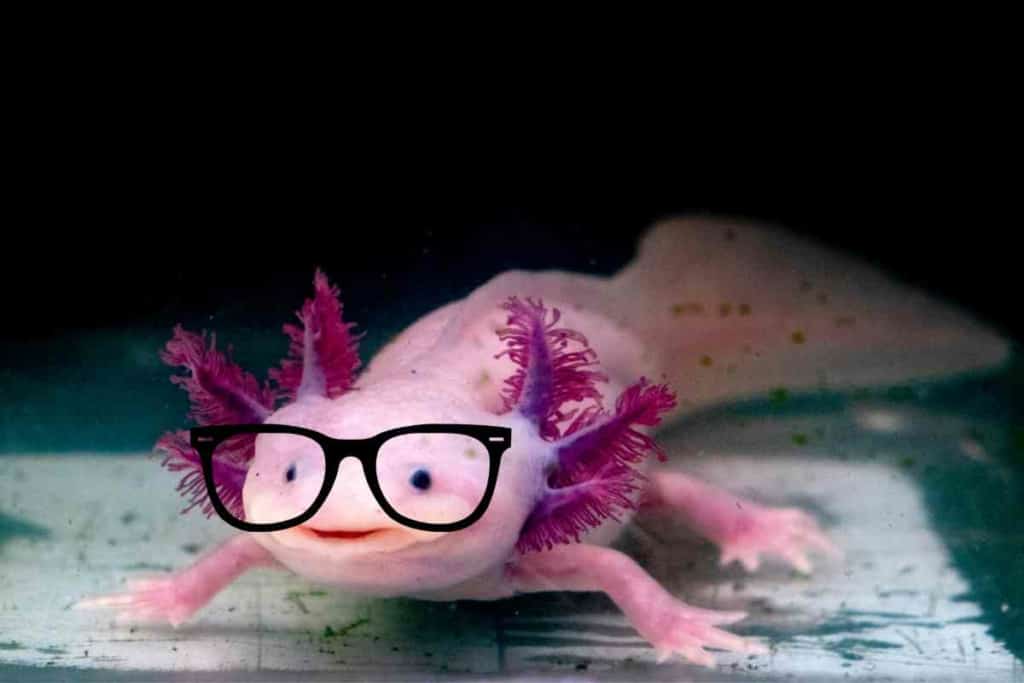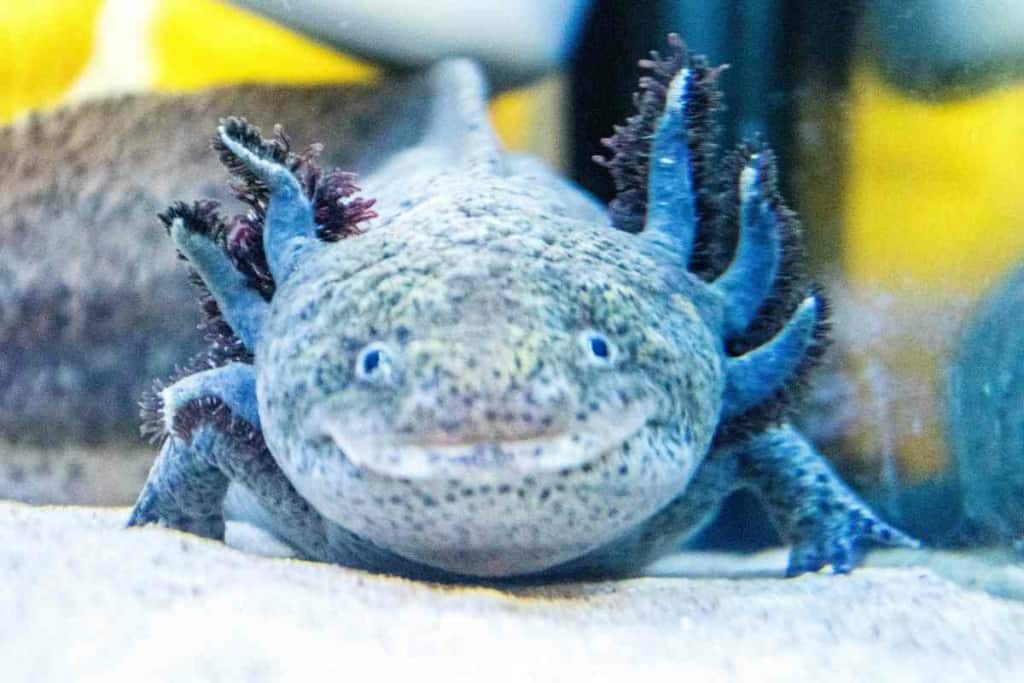Axolotl Vision: What They Can & Cannot See
Axolotls are one of the rarest tiny creatures to exist on this planet, with traits that set them apart. A common question many owners often ask is, do axolotls have good eyesight?

Do Axolotl Have Good Eyesight?
It’s safe to say that axolotls aren’t blind, but their eyesight isn’t the best either. While they can see a little bit, their vision is nowhere as sharp as other animals in the wild.
However, since these creatures live in shadowy murky water, they don’t need to have great eyesight. In fact, their poor vision might actually be an advantage in some situations.
To help you get a better insight into this matter, here we will go over the standard visual abilities axolotls possess, why they often have poor vision, and how their eyesight can be made better.
Are Axolotls Able To See?
Axolotls are able to see, but their vision isn’t by any means remarkable. In the wild, these creatures often reside in murky and dark waters, which makes it difficult to spot potential prey or predators.
As a result, they don’t need to have great eyesight.
While their vision isn’t the best, they are still able to see somewhat well. This is because their eyes are equipped with rod cells. Rod cells allow axolotls to see in low light conditions, but they aren’t very good at picking up on details.
In addition to rod cells, axolotls also have cone cells in their eyes. Cone cells are responsible for helping an animal see colors, and they also aid in picking up on smaller details.
While axolotls have both rod and cone cells in their eyes, they don’t rely on cone cells as much as other animals do.
This is because their habitat is often dark and murky, which doesn’t allow for many colors to be visible. Moreover, since they don’t need to see fine details, cone cells aren’t as necessary.
Why Do Axolotls Have Poor Eyesight?

Research is still ongoing to definitely understand why axolotls have poor eyesight. However, there are a few probable explanations for this.
- One of the primary reasons axolotls have poor eyesight is that they live in dark and murky waters. This type of environment doesn’t allow for much light to reach their eyes which makes it difficult to see.
- Another reason why these creatures often have poor vision is that their eyes are small in comparison to other animals. This limits the amount of light that their eyes are able to take in, which affects their ability to see clearly.
- In addition, axolotls also have a layer of skin that covers their eyes. This layer of skin can make it difficult for light to reach their eyes which further diminishes their vision.
- Another factor that contributes to their poor eyesight is the fact that their eyes are positioned on the sides of their head. This placement makes it difficult for them to see directly in front of them, which can make it hard to spot potential prey or predators.
- Furthermore, axolotls also have a nictitating membrane that covers their eyes. This membrane is used to protect their eyes from debris and other particles in the water. However, it can also make it difficult for them to see clearly.
- In addition, axolotls have a reflective layer in their eyes that helps them see in low-light conditions. While this reflective layer is helpful, it can also cause glare which makes it difficult for them to see clearly.
- Finally, another reason why axolotls often have poor vision is that their eyes are constantly moving. This constant movement makes it difficult for them to focus on one specific thing, which can make it hard to see clearly.
How Much Can Axolotls See?
Even though axolotls can’t see that well, it has been discovered that their eyesight is only slightly better than a human’s.
While they can see, they often have trouble distinguishing between different colors and picking up on smaller details.
This is likely because of the lack of cone cells.
However, even though they might have trouble seeing some things, axolotls are still able to get around just fine. This is because they have a very keen sense of smell, and they’re able to use this to navigate their way around.
In addition, axolotls are also able to detect movement very well. This is an advantage for them since it allows them to spot potential prey or predators from a distance.
How Can Their Eyesight Be Improved?

Unfortunately, there isn’t much that can be done to improve an axolotl’s eyesight. But some changes can be made to ensure your axolotl in captivity has the best possible vision.
- One way to help improve your axolotl’s vision is to provide them with a larger tank. This will allow for more light to reach their eyes and will make it easier for them to see.
- Another way to help improve their vision is to increase the water temperature in their tank. Warmer water will allow for more light to penetrate the water and reach their eyes.
- In addition, you can also try adding some plants to their tank. Plants can help filter the water and make it clearer, which will make it easier for your axolotl to see.
- You can also try moving their tank to a location that gets more light. This will help ensure that your axolotl is getting enough light to see clearly.
- Another way to help improve their vision is to feed them live food. Live food, such as worms or insects, will move around, and this can help stimulate your axolotl’s eyesight.
- You can also try using a dimmer switch to adjust the amount of light in the tank. This will allow you to control the amount of light that reaches their eyes and will help prevent them from being blinded by too much light.
- In addition, you can also try using a red light bulb in their tank. Red light has been shown to help improve night vision in animals, and it might also help improve your axolotl’s vision.
- Finally, you can also try using eye drops to help improve your axolotl’s vision. Eye drops can help lubricate their eyes and make it easier for them to see.
Which Types of Axolotls have better eyesight?
There are a few different types of axolotls, and some of them have better eyesight than others. The following is a list of the different types of axolotls and their vision:
- Wild axolotls have the best vision out of all the different types of axolotls. This is because they are exposed to more light in their natural habitat.
- Albinos also have good vision compared to other types of axolotls. This is because they lack pigment in their eyes which allows for more light to reach their retina.
- Leucistic axolotls also have good vision compared to other types of axolotls. This is because they have a reduced amount of pigment in their eyes which allows for more light to reach their retina.
- Melanistic axolotls have the worst vision out of all the different types of axolotls. This is because they have an excess amount of pigment in their eyes which blocks out light and makes it difficult for them to see.
- Finally, captive axolotls generally have poorer vision than wild axolotls. This is because they are not exposed to as much light in captivity, and their eyesight can be further affected by the water quality in their tank.
Key Takeaways
- Axolotls often have poor vision due to a number of reasons, primarily because they live in dark and murky waters.
- But some changes can be made to help improve their vision. These include providing them with a larger tank, increasing the water temperature in their tank, adding plants to their tank, and feeding them live food.
- You can also try using a dimmer switch to adjust the amount of light in their tank or using a red light bulb.
